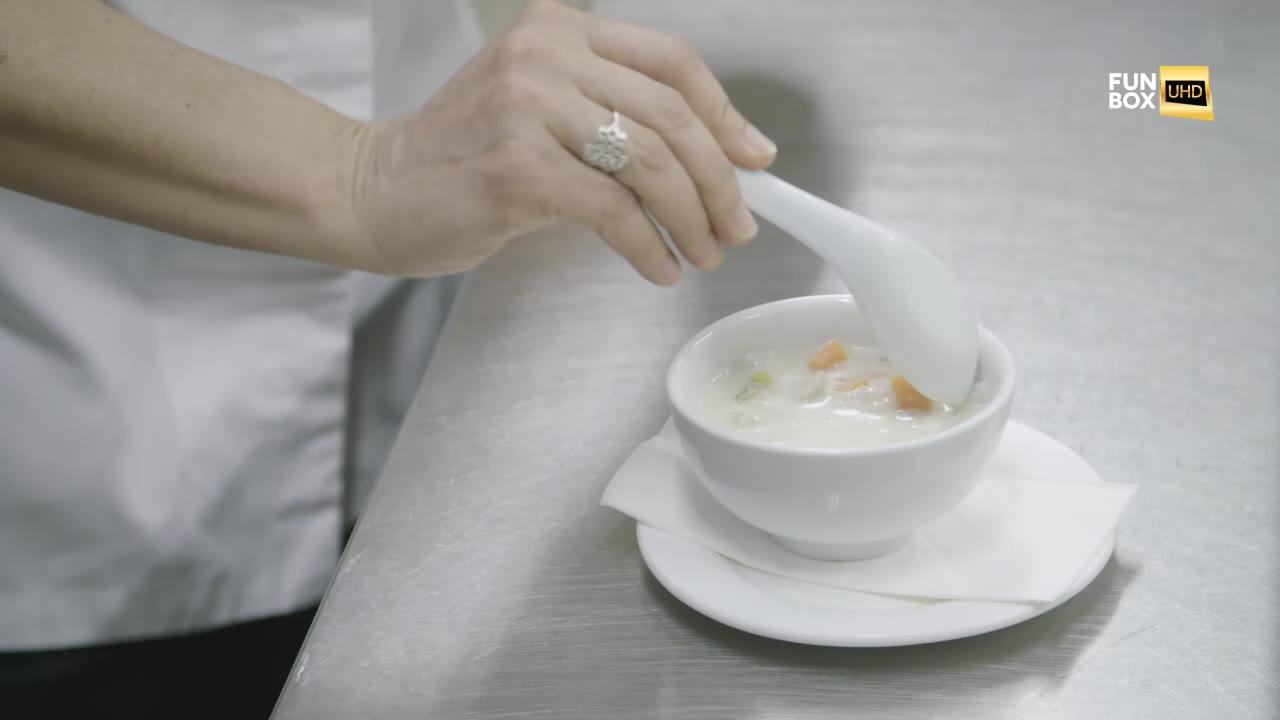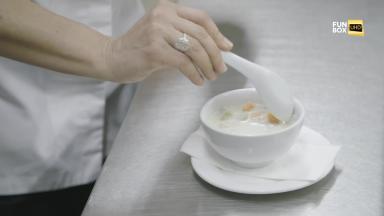
Konfucije je bio gurman
S03E02 - Konfucije je bio gurman III (2)
Chinese cuisines use sugar very differently from Western cuisines, and Christine starts her comparison in Paris and Athens where she looks at how Westerners interpret ‘sweet’. Traditionally, for the Chinese, sugar is predominantly used to achieve balance, but the liberal use of sugars in South East Asia Chinese cuisines are a culinary surprise. ‘Sweet’ is most traditionally found in the simple and omnipresent ingredient rice, so Cushing is off to the rice paddies of Malaysia follow the process of planting and processing.
Dodatne informacijeEpizode
Season 3Konfucije je bio gurman III (1)
Most salt in Asia is produced through the evaporation of seawater in coastal areas. This episode sees Christine learning firsthand the very challenging ‘how to’ of harvesting sea salt in Thailand’s dramatically beautiful salt fields. Cushing visits the area’s most unusual market that is regularly disrupted by the Maeklong Railway going right through it’s center! She cooks alongside chefs preserving traditional Chinese cuisine in Bangkok and at Singapore’s oldest Chinese restaurant, Spring Court, Christine discovers Singapore Chinese cuisine and meets with culinary legend; Madam Soon.
Konfucije je bio gurman III (2)
Chinese cuisines use sugar very differently from Western cuisines, and Christine starts her comparison in Paris and Athens where she looks at how Westerners interpret ‘sweet’. Traditionally, for the Chinese, sugar is predominantly used to achieve balance, but the liberal use of sugars in South East Asia Chinese cuisines are a culinary surprise. ‘Sweet’ is most traditionally found in the simple and omnipresent ingredient rice, so Cushing is off to the rice paddies of Malaysia follow the process of planting and processing.
Confucius Was a Foodie
According to science humans are the only mammals that are attracted to sour. Chinese medicinal believes says that ‘sour’ can help digestion and whet the appetite. In 3 traditional Chinese cuisines it is often used for balance but in south East Asian versions of Chinese dishes it is often quite forward even becoming part of the name of a dish particularly in traditional Peranakan Chinese cuisines. A cuisine (and a people) that Christine discovers for the first time. Christine joins Malaysian celebrity Chef Wan for a one of a kind experience, cooking in a traditional old Peranakan kitchen and making the food of Chef Wan’s heritage.
Konfucije je bio gurman III (5)
Despite popular belief ‘spicy’ in Chinese cuisines is not always hot! In various Chinese cuisines, spices are complex and varied. Chef Christine visits the Malaysian island of Penang, a location historically important to the story of spice trade with TV celebrity Chef Wan for a fun and fact filled visit to the Tropical Spice Garden. At a picturesque mountain top plantation, they pick nutmeg and discover the unique uses of the fruit/spice particular only to this Malaysian island.
O emisiji
According to science humans are the only mammals that are attracted to sour. Chinese medicinal believes says that ‘sour’ can help digestion and whet the appetite. In 3 traditional Chinese cuisines it is often used for balance but in south East Asian versions of Chinese dishes it is often quite forward even becoming part of the name of a dish particularly in traditional Peranakan Chinese cuisines. A cuisine (and a people) that Christine discovers for the first time. Christine joins Malaysian celebrity Chef Wan for a one of a kind experience, cooking in a traditional old Peranakan kitchen and making the food of Chef Wan’s heritage.



